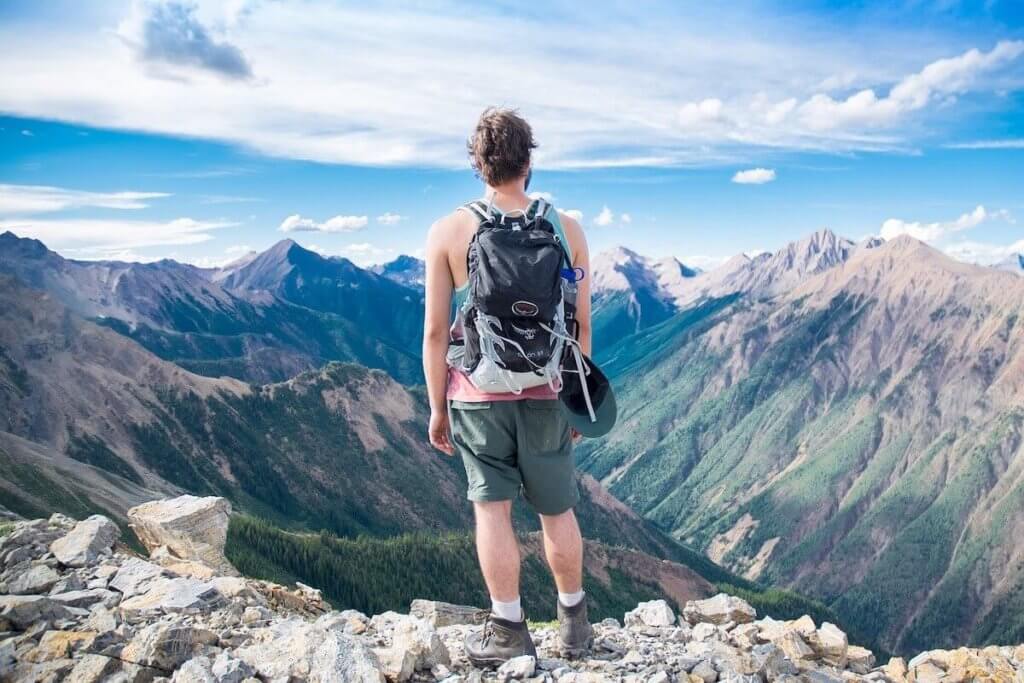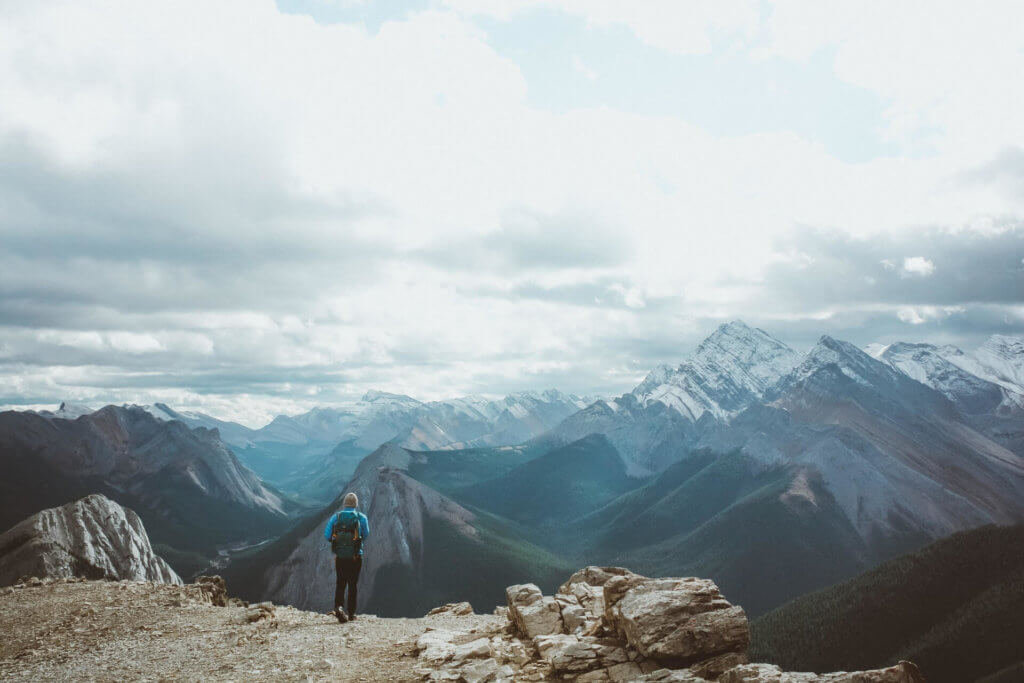It doesn’t take a trip up Everest to begin to feel the effects of higher altitudes. A visit to one of your favorite mountain destinations can be enough. However, with proper preparation and understanding of how to acclimate your body appropriately and spend time at altitude, as well as what the signs and symptoms of altitude sickness are, you can maximize your enjoyment in the Roaring Fork Valley.
What is Acclimatization to High Altitude?
Acclimatization is the process of allowing your body to adapt to higher altitudes. Specifically, this applies to decreasing oxygen in the air as you go higher. If possible, ascend gradually to give your body sufficient time to adapt. A prominent school of thought is that people should not ascend from a low elevation to more than 9,000 feet (2,750 m) sleeping elevation in one day. Once above 9,000 feet, ascend no higher than 1,600 feet (500 m) sleeping elevation per day and plan an extra day for acclimation every 3,300 feet (1,000 m).

The High Altitude Acclimatization Process
PREPARATION STAGE
If you’re planning an upcoming visit to Aspen and the Roaring Fork Valley, consider spending your first night in Colorado in Denver. The Mile High City is still about 3,000 feet lower than Aspen, which sits at an elevation of 8,000 feet. Spending one night in Denver’s 5,280-foot elevation will help your body adjust before you head higher. Once you arrive in Aspen, it’s worth taking it easy for the first day or two. Over exerting yourself right off the bat might mean you spend the rest of your visit trying to recover.
ASCENT STAGE
The Ascent Stage happens when you ascend above 9,000 feet. As mentioned above, it’s best not to sleep higher than 1,600 more feet per day. If you’re coming to ski Aspen’s famous slopes, note summit elevations, which range from 9,900 feet to 12,510 feet.
DESCENT STAGE
You’ve reached the summit, enjoyed the journey, and now it’s time to head back down. Descending can seem like the easiest part of your high altitude endeavor, but it still requires your body to work hard. If you’re topping out on some of Colorado’s famous 14-ers (14,000-foot peaks), make sure you have enough rest before descending at a fast rate to avoid injury.


Choose your healthy journey to receive the information you want to reach your goals.
Aspen Valley Hospital has a wealth of classes, events and workshops to educate and empower our extraordinary community as we reach the summit together.
High Altitude Acclimatization Tips
There are some easy ways you can stay healthy at higher elevations.
DRINK A LOT OF WATER
Staying hydrated is a great way to help your body’s performance as you say goodbye to sea level and head for the hills. Curious about how much water to drink?
EAT A REASONABLE AMOUNT OF FOOD
The reduced number of oxygen molecules in the air at altitude means your body has to work harder. In turn, it burns more calories trying to keep up. Consuming a higher calorie diet in the days and weeks leading up to your trip can help your body sustain the effort. And of course, make sure to take plenty of food with you on your journey. Wholesome, calorie-dense foods are a great choice to power any hike and if you’re curious, Aspen Valley Hospital’s Dietitians recommended these snacks to bring up the mountain.
REDUCE YOUR EXERCISE
This one might seem counter-intuitive. “I’m heading to the mountains to hike, bike or ski; shouldn’t I increase my exercise before I go?” The answer is two-fold. In the months leading up to your trip, yes, it’s very important to make sure you’re in shape and prepared for the activity at the epicenter of your travels. However, upon arriving, take a day or two to rest and relax. This gives your body time to adjust without putting undue stress on your heart and lungs.
LIMIT YOUR ALCOHOL INTAKE
We know; this can be tough when you’re on vacation and simply want to kick back and enjoy. But if spending time above 9,000 feet is part of your Aspen experience, alcohol can hinder your body’s ability to acclimatize. This comes in the form of alcohol simply having a bigger impact on your system at altitude. It’s also dehydrating and disrupts your sleep – two big no-nos if you’re trying to adjust.
GET A HEALTHY AMOUNT OF SLEEP
This can be surprisingly hard during your first few days at elevation, but a solid eight hours will give your body proper time to rest and recuperate after active days in the mountains. Here are Aspen Valley Primary Care’s Tips on Improving the Quality of Your Sleep.
What to Do for Altitude Sickness
If you’re experiencing common symptoms of altitude sickness (light-headedness, nausea, loss of appetite, shortness of breath, headache), it’s best to rest and not go any higher for one to two days. Make sure you’re drinking plenty of water. Consider taking a pain reliever or anti-nausea medication.
If your mountain sickness is getting worse, there is a chance you might be experiencing acute mountain sickness (AMS), high altitude pulmonary edema (HAPE) or high altitude cerebral edema (HACE). When you’re at a high altitude where immediate medical care is not accessible, it’s best to descend to a lower elevation as quickly as possible. If severe altitude sickness, AMS, HAPE or HACE persist, seek immediate medical attention.
Acclimatization Key Takeaway
The Roaring Fork Valley is home to some of the most majestic mountains in the country. Visitors enjoy world-class skiing, incredible hiking and mountaineering and endless mountain biking trails, all of which can be enjoyed with the right information and preparation. A visit to a higher altitude does require additional attention to your body and your health.
- In addition to acclimatization, remember that you’ll be closer to the sun, and therefore might experience more severe sun exposure. Pack your favorite SPF!
- Conditions can be more pronounced the higher you go. Make sure to pack and wear appropriate clothing.
- Don’t be afraid to pop into a local ski or mountaineering shop to learn more about the day’s weather and snow conditions.
- Understand acclimatization and give your body enough time to adapt.
- Familiarize yourself with Aspen Valley Hospital’s medical facilities and services.
With proper preparation and understanding of altitude, a visit to the Roaring Fork Valley is sure to be a remarkable one! To get fully prepared for the change in elevation, download the High Altitude Life Handbook

